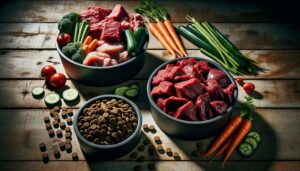Ever wondered exactly how much dog food for two weeks your furry friend really needs? Getting it right means more than just checking the bag size—it’s about understanding your dog’s unique daily calorie needs based on weight, age, and activity level. Active dogs burn more calories, so factoring this in is key. Start by reading the calorie content per cup on the label, then multiply your dog’s daily calorie needs by 14 to cover two weeks. Divide that total by calories per cup to find the perfect portion size. Remember to adjust if your dog has allergies or sensitivities, and always match the food to their life stage—puppy, adult, or senior. Store the food in cool, airtight containers to keep it fresh and avoid waste. This simple approach ensures your dog stays healthy, happy, and well-fed without the guesswork.
Key Takeaways
- Calculate your dog’s daily calorie needs based on weight, age, and activity level to determine two-week requirements.
- Multiply daily calorie needs by 14, then convert total calories into food volume using calorie content per serving.
- Adjust food quantity for any allergies, sensitivities, or special dietary needs your dog may have.
- Use airtight containers and store food away from heat and moisture to maintain freshness for two weeks.
- Monitor your dog’s weight and activity to adjust feeding amounts as needed during the two-week period.
Factors to Consider When Calculating Your Dog’s Food Needs

How to feed your dog the right amount:
- Figure out daily calories. Age, weight, activity, and metabolism matter.
- Check for diet limits. Allergies or health issues change what they can eat.
- Match food to life stage. Puppies, adults, and seniors need different nutrition.
Use these steps to avoid overfeeding or underfeeding and keep your dog healthy.
Estimating the Right Amount of Food for a Two-Week Supply
To avoid waste, calculate your dog’s food for two weeks:
- Find daily calories.
- Multiply by 14 for two weeks.
- Check calories per cup on the food label.
- Divide total calories by calories per cup to get cups needed.
- Store food in an airtight container in a cool, dry spot.



